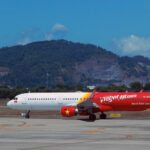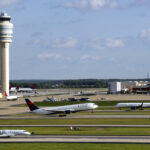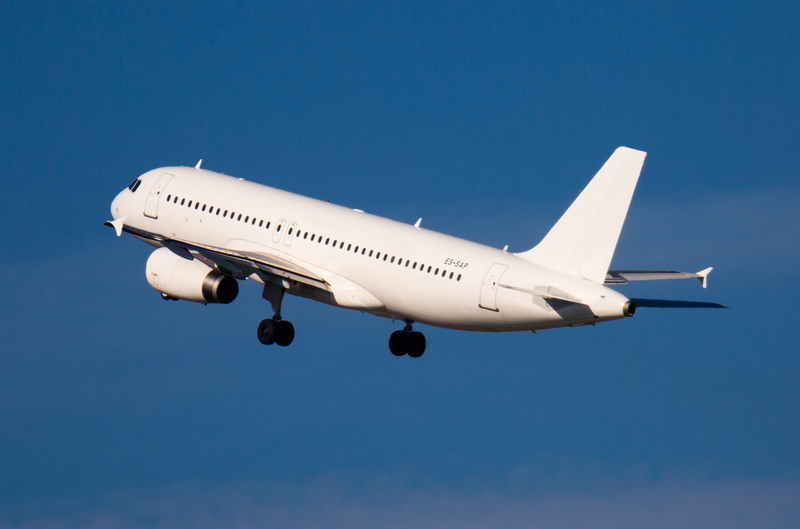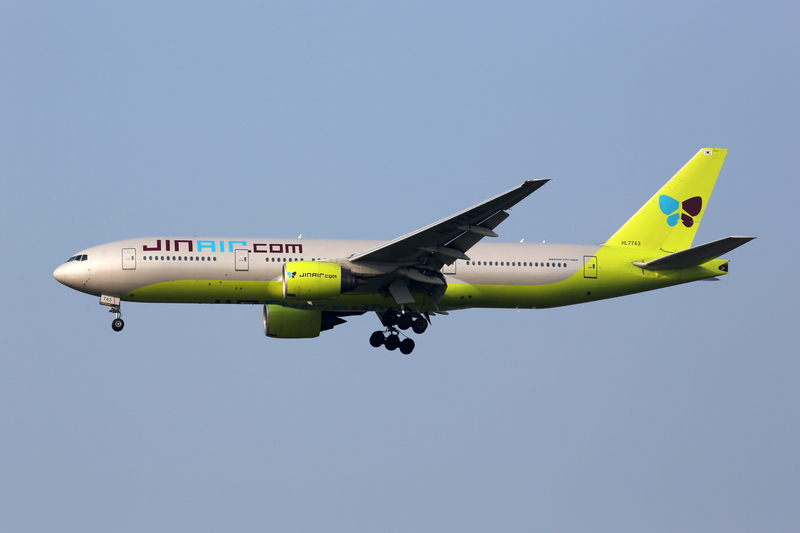New Boeing Operator: Vietjet Thailand Receives First Of 50 Boeing 737 MAXs
Vietjet Thailand has officially joined the ranks of Boeing 737 MAX operators, taking delivery of its first 737 MAX 8 in Bangkok on November 23, 2025. The aircraft is the first of 50 MAX jets earmarked for the Thai subsidiary under Vietjet Group’s larger Boeing order and marks a major shift in the airline’s fleet and growth strategy.
Key Takeaways:
-
Vietjet Thailand has received its first Boeing 737 MAX 8, registered HS-VZA, at Bangkok Suvarnabhumi Airport.
-
The jet is the first of 50 Boeing 737 MAX aircraft allocated to the Thai unit from Vietjet Group’s broader order for 200 Boeing jets.
-
Initial routes will include Bangkok–Chiang Mai domestically and Bangkok–Cam Ranh (Vietnam) from December 2025, with Japan, South Korea, and China to follow in 2026.
-
The 737 MAX offers 15–20% lower fuel burn and reduced emissions, is compatible with Sustainable Aviation Fuel (SAF), and has up to 50% lower noise levels versus older generation aircraft.
-
Deliveries will continue through 2028, enabling significant expansion and a more standardized, fuel-efficient fleet for Vietjet Thailand.
Vietjet Thailand Becomes A Boeing 737 MAX Operator
Vietjet Thailand’s first Boeing 737 MAX 8, HS-VZA, arrived at Bangkok Suvarnabhumi on November 23, 2025, officially making the carrier a new Boeing narrowbody operator.
The aircraft is part of a massive long-term commitment: Vietjet Group has a 200-aircraft Boeing order valued at around $32 billion, with 50 of those frames now allocated to its Thai subsidiary. This first delivery represents the opening chapter in a multi-year fleet transition that will reshape Vietjet Thailand’s operations and capabilities.
Details Of The 50-Aircraft Deal
Under the group’s plan, 50 Boeing 737 MAX aircraft will be transferred to Vietjet Thailand over the next three years. This follows a high-profile agreement announced earlier in 2025 and formalized at a ceremony attended by the prime ministers of both Vietnam and Thailand.
Key elements of the deal include:
-
50 Boeing 737 MAXs (starting with MAX 8s) destined for Vietjet Thailand.
-
Deliveries spread gradually through 2028, allowing capacity to grow in step with market demand.
-
A broad support package from Boeing covering:
-
Pilot and engineer training
-
Maintenance and technical services
-
Operational support to ensure a smooth introduction of the type
-
For Boeing, the arrangement deepens its presence in Southeast Asia; for Vietjet Thailand, it delivers a modern workhorse capable of flying deeper into Asia with better economics.
How The 737 MAX Fits Into Vietjet Thailand’s Network
Vietjet Thailand plans to introduce the 737 MAX in a phased way, starting close to home and then radiating outward into the wider region.
Planned deployment includes:
-
Phase 1 – Domestic launch
-
Bangkok–Chiang Mai as the inaugural route
-
Focus on high-demand trunk routes within Thailand
-
-
Phase 2 – Regional international
-
Bangkok–Cam Ranh (Vietnam) from December 2025
-
Additional Southeast Asian routes to follow
-
-
Phase 3 – Extended Asia network (from 2026)
-
New flights to Japan, South Korea, and China
-
Use of the MAX’s longer range (around 6,500 km / 3,500+ nm) to reach deeper into North and Northeast Asia
-
As more 737 MAXs arrive, Vietjet Thailand will be able to:
-
Add frequencies on existing routes
-
Open new point-to-point connections
-
Better balance capacity between domestic, regional, and medium-haul services
Efficiency, Sustainability, And Passenger Experience
The Boeing 737 MAX is central to Vietjet Thailand’s push for a more efficient and environmentally friendly fleet. The aircraft incorporates:
-
LEAP-1B engines with significantly lower fuel burn
-
Advanced aerodynamics and winglets
-
A Boeing Sky Interior with modern lighting and larger overhead bins
Vietjet highlights several performance gains:
-
15–20% lower fuel consumption and CO₂ emissions vs. previous-generation jets
-
Up to 50% less noise, supporting airport noise restrictions and improving community impact
-
SAF compatibility, aligning the airline with global decarbonization efforts
For passengers, the MAX introduces a fresher, more comfortable cabin environment while preserving Vietjet’s low-cost model and high-density layouts.
Fleet Strategy And Vietjet Group’s Bigger Picture
This delivery is part of a much larger fleet-standardization and growth strategy across the Vietjet Group.
Current fleet snapshot:
-
Vietjet (Vietnam):
-
Around 97 aircraft, primarily from the Airbus A320 family
-
-
Vietjet Thailand:
-
18 aircraft prior to the MAX, mostly Airbus A320 series
-
Now transitioning to a mixed Airbus/Boeing fleet with the 737 MAX
-
By integrating the 737 MAX into the Thai operation, the group:
-
Gains greater flexibility in aircraft deployment between Vietnam and Thailand
-
Leverages common training and support from Boeing across multiple airlines in the group
-
Positions Vietjet Thailand for faster growth on longer regional routes where extra range and efficiency matter most
Over time, as more MAX aircraft enter service, Vietjet Thailand can reduce reliance on older, less efficient airframes and shift toward a leaner, standardized narrowbody fleet.
Strategic And Geopolitical Significance
Beyond pure fleet economics, this deal carries broader strategic weight:
-
It deepens economic ties between Vietnam, Thailand, and the United States through a major aerospace partnership.
-
It signals Vietjet Thailand’s evolution from a relatively small, all-Airbus low-cost player into a modern, dual-manufacturer operator with serious regional ambitions.
-
It strengthens Thailand’s role as a regional aviation hub, with Bangkok Suvarnabhumi serving as a springboard to key markets across Asia.
Vietjet’s broader plan to operate an “ABC fleet” (Airbus, Boeing, Comac) underscores its intention to be one of the most flexible and influential low-cost groups in Asia. Vietjet Thailand’s first 737 MAX is one of the most visible early steps in that strategy.
Bottom Line
Vietjet Thailand’s first Boeing 737 MAX 8 marks the start of a major fleet transformation, with 50 MAX aircraft set to join the airline over the next few years. The type will debut on Bangkok–Chiang Mai, then expand to Vietnam, Japan, South Korea, and China, giving the carrier more range, capacity, and fuel efficiency across its network.
Backed by Boeing’s training and technical support, and aligned with Vietjet Group’s $32 billion Boeing order, this move positions Vietjet Thailand for significant regional growth—while also signaling a strategic shift toward a more modern, sustainable, and internationally capable fleet.





